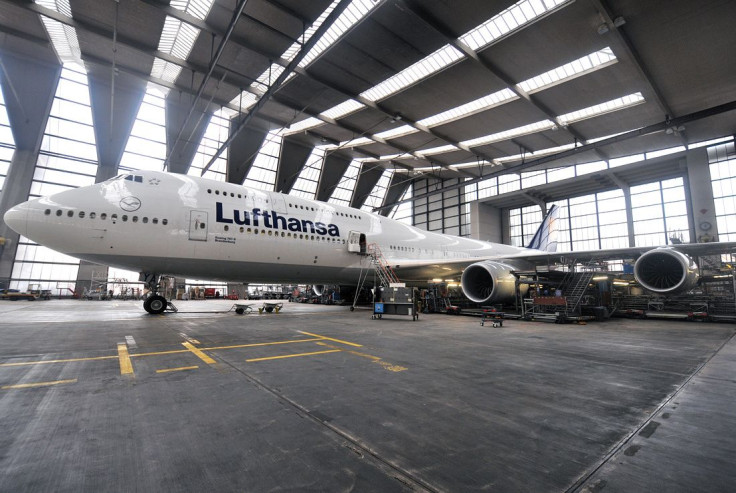The New Air Force One Contract Won’t Save The Boeing 747

Boeing scored a public relations hit on Wednesday, when the U.S. Air Force announced it had selected the 747-8 as the new presidential aircraft, continuing a tradition that has seen Boeing build the airplanes that transport the president of the United States since 1962.
“Secretary of the Air Force Deborah Lee James, in coordination with the Undersecretary of Defense for Acquisition, Technology and Logistics Frank Kendall, has determined the Boeing 747-8 will serve as the next presidential aircraft, commonly known as Air Force One,” a USAF statement said.
The 747-8 is the current version of the iconic 747, the hump-backed jet that inaugurated the era of twin-aisle airplanes in 1970 and has been an icon of air travel since. It would take the place as Air Force One of a previous 747 model, which the Air Force calls the VC-25A and has been flying presidents since 1990.
But the 747, even in its latest, technologically advanced incarnation, is on its way out, with dwindling sales threatening the plane’s very existence. The order from the U.S. Air Force, while prestigious, will not save the Jumbo Jet from going out of production soon.
“If current trends continue, it probably means the end of the 747 by the end of the decade,” said Richard Aboulafia, vice president at Fairfax, Virginia-based Teal Group, an aviation consultancy firm.
The 747 is a perfectly fine airplane, with an excellent safety record and a 45-year history of commercial service, longer than any other widebody aircraft. But it has a crippling problem: It flies on four engines. Its current competitors do pretty much everything the 747 can, but on just two. The latest iteration of Boeing’s own large twinjet, the 777X, has been so successful that it has essentially killed its own sibling. It transports in a typical configuration about 400 passengers, only a little fewer than the 747-8, over the same maximum distance of 15,000 km (9,300 miles) -- and it burns a lot less fuel per each seat flown one mile, a key measure in the industry. Airlines have switched en masse to large twins, including the Airbus A350.
“At the end of December, we still had 36 unfilled orders for 747-8s,” Boeing spokesman Doug Alder wrote in an email.
According to an email to Congress cited by Bloomberg News, Air Force Secretary Deborah James signed a document on Wednesday naming Boeing as the “sole source contractor” to provide three 747-8s (it means Boeing will get the contract with no competition, although onboard systems will be bought from competing bids. Airbus, the only other maker of large-enough aircraft, did not submit an entry.)
At the current production rate of 1.3 airplanes per month, that gives the 747-8 only a little more than two years of commercial life. If no new orders come in, or production isn’t slowed down, that would mean the 747 line closes in mid-2017 after the last of 39 planes left is built
Boeing could, however, pick up a few orders, especially for the freighter version.
“We continue to pursue campaigns for the 747-8 for both the passenger and freighter versions. We’re especially encouraged by the recovering cargo market,” Alder said.
“We have seen some pickup in the cargo business,” agreed Aboulafia, who, however, does not see major orders ahead except for “a couple of airplanes here and there.”
The 747-8 for the president would enter service in 2023, according to Bloomberg, after five years of tests and systems integration, which would include sophisticated communication and anti-missile capabilities like those found on the current presidential jets.
They will most likely be the last Boeing 747s in passenger service anywhere in the world. Airlines are retiring 747s “far faster than anybody expected,” Aboulafia said, as oil prices that remained at or above $100 a barrel for years until mid-2014 forced them to find ways to save on fuel. The trend will probably continue even with today’s falling oil prices; airlines have learned since the oil crisis of the early 1970s that oil is cyclical, as are profits in the air transport industry, and will always go for the fuel-saving option if they can.
But the U.S. Air Force is far more concerned with the prestige that a huge four-engined 747 signals than with the price of jet fuel.
“The presidential aircraft is one of the most visible symbols of the United States of America and the office of the president of the United States,” said James, the Air Force secretary. “The Boeing 747-8 is the only aircraft manufactured in the United States (that), when fully missionized, meets the necessary capabilities established to execute the presidential support mission, while reflecting the office of the president of the United States of America consistent with the national public interest.”
The USAF said its expects a 30-year life cycle for the new planes, about as long as the current VC-25s. If the new Air Force Ones fly as long as their predecessors, we can expect to see 747-8s in the skies until well into the 2050s.
© Copyright IBTimes 2024. All rights reserved.





















